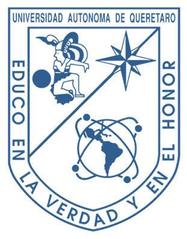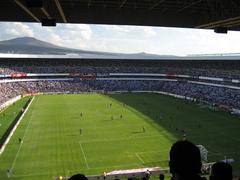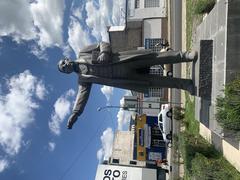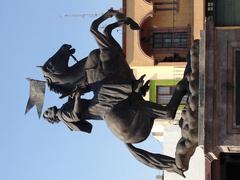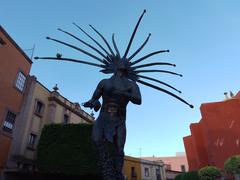Visiting the Museum of the Restoration of the Republic in Santiago de Querétaro, Mexico — Comprehensive Guide
Date: 14/06/2025
Introduction
Located in the heart of Santiago de Querétaro’s UNESCO-listed historic center, the Museum of the Restoration of the Republic (Museo de la Restauración de la República) stands as a testament to a defining era in Mexico’s history. Housed in a colonial building that once served as a prison for Emperor Maximilian I and his generals, the museum offers an immersive exploration of the fall of the Second Mexican Empire and the subsequent restoration of the Mexican Republic between 1867 and 1876. This guide provides a detailed overview of the museum’s historical significance, practical visitor information, accessibility, and tips for maximizing your experience in Querétaro’s vibrant historic core (Warbleton Council, Querétaro Travel, TripSavvy).
Table of Contents
- Historical Context and Museum Significance
- Key Exhibitions and Architectural Features
- Visitor Information: Hours, Tickets, and Accessibility
- Planning Your Visit: Tips and Nearby Attractions
- Visitor Amenities and Engagement
- Frequently Asked Questions (FAQ)
- Conclusion
- Sources
Historical Context and Museum Significance
The Fall of the Second Mexican Empire and Restoration Era
The Museum of the Restoration of the Republic is intricately linked to the tumultuous period marking the collapse of the French-backed Second Mexican Empire and the reestablishment of republican rule. The “Restauración de la República” began in 1867 with the defeat and execution of Emperor Maximilian I at Cerro de las Campanas, a pivotal event that cemented the triumph of republican ideals under President Benito Juárez. The museum’s location, formerly a colonial prison, is where Maximilian and his generals awaited their fate, making it a site of profound national memory (Britannica, Sailing Stone Travel).
Architectural and Cultural Features
The museum’s building, a preserved example of colonial architecture, features thick cantera stone walls, high ceilings, and an airy central courtyard. Originally constructed as a convent, the structure later served as a prison before its conversion into a museum. Restoration efforts have maintained original architectural details, including red tile roofing, wrought-iron grilles, and hand-carved doors. The adaptive reuse of this historic site underscores Querétaro’s commitment to preserving its cultural heritage while fostering public education (Wanderlog, TripSavvy).
Key Exhibitions and Architectural Features
Permanent Exhibitions
The museum’s permanent collection is organized chronologically, guiding visitors through the French Intervention, the Siege of Querétaro, and the restoration of the Republic. Notable displays include:
- Artifacts from the Siege of Querétaro: Uniforms, weapons, and personal items.
- Documents and letters: Original decrees and correspondence from Benito Juárez and other historical figures.
- Reconstructed prison cells: Providing a tangible sense of the building’s somber past.
- Multimedia presentations: Audio-visual installations in select rooms, some with English subtitles (Tripomatic).
Temporary Exhibitions and Programming
The museum regularly hosts temporary exhibitions on related historical themes, such as the broader context of republicanism in Latin America or 19th-century Mexican art. Educational workshops, lectures, and annual commemorative events—particularly around May 15 (Siege of Querétaro anniversary) and June 19 (Maximilian’s execution)—draw locals and visitors alike (Wanderlog).
Visitor Information: Hours, Tickets, and Accessibility
Location
- Address: Vicente Guerrero Norte 23, Historic Center, 76000 Santiago de Querétaro, Mexico (Mapcarta)
- Easily accessible on foot from major city landmarks, with taxis and public transit available nearby.
Visiting Hours
- Tuesday to Sunday: 10:00 AM – 6:00 PM
- Monday: Closed
- Closed on major holidays; always check the museum’s official website or social media for updates (Culture’s Traveled).
Ticket Information
- Admission: Typically free, or a modest fee under 50 MXN for adults.
- Discounts: Available for students, teachers, seniors; often free for children under 6 and on Sundays for Mexican residents (Roaming Around the World).
- Tickets: Purchase at the entrance; guided tours or group visits may require advance booking.
Accessibility
- The museum strives for accessibility, with ramps and adapted restrooms in main areas.
- Due to the building’s historic nature, some upper floors may be less accessible; contact the museum in advance for assistance.
- Service animals are generally allowed, but confirm policies ahead of time.
Planning Your Visit: Tips and Nearby Attractions
Best Time to Visit
- Climate: February–April and October–November are ideal, with mild temperatures and low rainfall (Weather2Visit).
- Festivals: Visiting during local celebrations such as Independence Day (September) or the Feria de Querétaro (December) can provide a lively cultural experience, though expect larger crowds.
Museum Experience
- Exhibits: Primarily in Spanish; translation apps or hiring a bilingual guide enhances understanding.
- Photography: Allowed without flash in most areas; check for restricted zones.
- Recommended duration: Allow 1–1.5 hours for a thorough visit.
Nearby Historical Sites
- Teatro de la República: Where the 1917 Mexican Constitution was drafted.
- Cerro de las Campanas: Execution site of Maximilian I, now a memorial park.
- Querétaro Cathedral, Casa de la Corregidora, and Museum of Sacred Art: All within walking distance (The Vanabond Tales, Backpacking Brunette).
- Local dining: Enjoy nearby cafes and restaurants serving regional specialties.
Visitor Amenities and Engagement
- Restrooms and seating: Available throughout the museum.
- Gift shop: Sells history-themed books, souvenirs, and local crafts.
- Library and archive: For researchers and groups seeking deeper study of the period.
- Guided tours: Offered in Spanish (English by prior arrangement); brochures available in multiple languages (Tripomatic).
Frequently Asked Questions (FAQ)
Q: What are the museum’s visiting hours?
A: Tuesday–Sunday, 10:00 AM–6:00 PM; closed Mondays.
Q: Is there an admission fee?
A: Usually free; special exhibitions may carry a small charge.
Q: Are guided tours available?
A: Yes, by advance reservation; primarily in Spanish with some English options.
Q: Is the museum accessible for visitors with disabilities?
A: Main areas are accessible, but some historic sections may have limitations; contact staff for assistance.
Q: Can I take photographs inside?
A: Non-flash photography is generally permitted; check posted signs for restrictions.
Conclusion
The Museum of the Restoration of the Republic offers a compelling, accessible, and educational experience set in one of Querétaro’s most significant historical buildings. By planning your visit with the information above, you’ll gain a deeper appreciation for the events that shaped modern Mexico and enjoy the rich tapestry of Querétaro’s cultural landscape. Combine your museum visit with exploration of nearby landmarks, enjoy local cuisine, and take advantage of guided tours or translation resources for the most rewarding experience.
For further updates on hours, events, and exhibitions, consult the museum’s official channels and trusted travel resources. Consider using travel apps like Audiala for curated itineraries and up-to-date tips on Querétaro’s historical sites and museums.
Sources and Further Reading
- Warbleton Council
- Britannica
- Sailing Stone Travel
- Querétaro Travel
- Travel by Mexico
- Wanderlog
- TripSavvy
- Tripomatic
- Evendo
- Roaming Around the World
- Culture’s Traveled
- Backpacking Brunette
- Mapcarta
- World Wide Travel Tips
- Weather2Visit
- The Vanabond Tales
